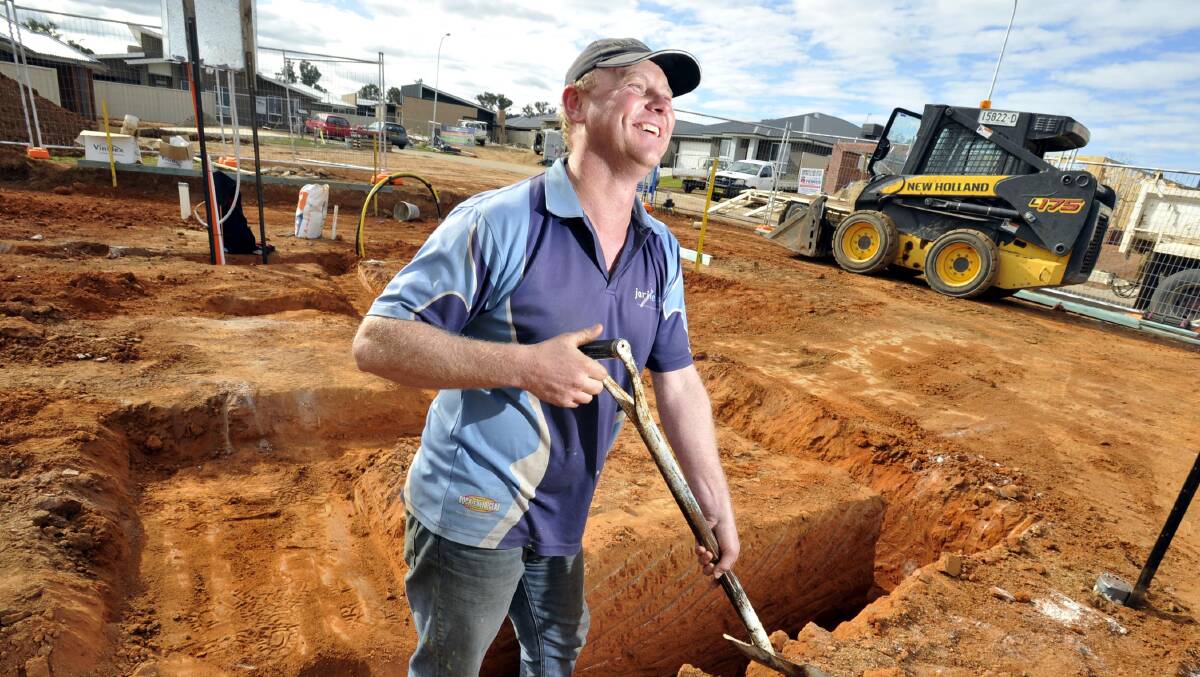
SELF-EMPLOYED builder Jari Nielsen stands on the foundations of a new home – but he’s also standing where a new family will likely spend many years of their life.
Subscribe now for unlimited access.
$0/
(min cost $0)
or signup to continue reading
And, as the latest figures suggest, new homes being built north of the city are driving Wagga’s future growth.
Mr Nielsen – who was toiling away at Estella Rise on Monday – said he had nearly six months of work in the pipeline.
“With Wagga, you always seem to be working for that next job, but it seems to be pretty constant at the moment,” he said.
“My father helped brick a farmhouse out here years ago … it was just a bare paddock back then.”
According to the Wagga Land Monitor Report, a total of 356 new homes are needed this financial year to fill demand brought on by population rises.
The report, which is yet to be officially announced to Wagga people, shows the most vacant lots soaked-up by population growth are north of the city in areas that include Boorooma, Estella and Gobbagombalin (also known as Estella Rise).
Housing Industry Association Wagga branch vice-chairman Peter Hurst said strong demand needed to be met with new land releases.
“Confidence is much better than what we’ve seen recently on the back of the Global Financial Crisis and the May budget last year,” he said. “The biggest thing is to keep supply going. If we have sufficient land supply, it keeps the momentum going.”
The report said in Estella, Boorooma and Gobbagombalin, the vast majority of vacant residential lots were built on in one year or less.
Boorooma, the suburb with the most activity in 2013-14, homes cropped up on 99 lots in a one-year time frame.
Mr Hurst recalled an industry famous anecdote about a release of new land at Estella Rise.
“It was going to be a launch party, but then it turned out to be a thank you party,” he said. “There was no need for the launch because the blocks had already sold.”
However, despite the demand, the figures show the average average vacant lot price has remained “relatively consistent” across most suburbs at $140 to $180 per square metre.
It compares with Central Wagga, the city’s most expensive suburb per square metre due to a limited supply of land.

